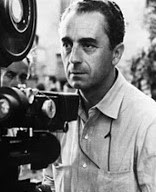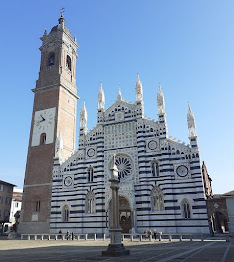Salvatore Maranzano - crime boss
Sicilian ‘Little Caesar’ who established New York’s Five Families
The criminal boss Salvatore Maranzano, who became the head of organised crime in New York City after the so-called Castellammarese War of 1930-31, was born on this day in 1886 in Castellammare del Golfo in Sicily. Maranzano’s position as ‘capo di tutti capi’ - boss of all bosses - in the city lasted only a few months before he was killed, but during that time he came up with the idea of organising criminal activity in New York along the lines of the military chain of command established in ancient Rome by his hero, Julius Caesar. His fascination with and deep knowledge of the Roman general and politician led to him being nicknamed 'Little Caesar' by his Mafia contemporaries in New York. Installing himself and four other survivors of the Castellammarese War as bosses, he established the principle of replacing the unstructured gang rivalry in New York with five areas of strictly demarcated territory to be controlled by criminal networks known as the Five Families. Originally the Maranzano, Profaci, Mangano, Luciano and Gagliano families, they are now known by different names - Bonanno, Colombo, Gambino, Genovese and Lucchese to be precise - but are essentially based on the same structure. Read more…
___________________________________________________________
Antonio Conte - football coach
Southern Italian roots of the former boss of Chelsea
Antonio Conte, the coach who led Italy to the quarter-finals of Euro 2016 and was most recently head coach of Inter Milan, having previously managed Chelsea in the English Premier League, was born on this day in 1969 in Lecce, the Puglian city almost at the tip of the heel of Italy. As a midfield player for Juventus, he won five Serie A titles and a Champions League. He also played in the European Championships and the World Cup for the Italy national team. After returning to the Turin club as head coach, he won the Serie A title in each of his three seasons in charge before succeeding Cesare Prandelli as Italy's head coach. Conte hails from a close-knit family in which his parents, Cosimino and Ada, imposed strict rules, although as a child Antonio was allowed to spend many hours playing football and tennis in the street with his brothers, Gianluca and Daniele. He began to play organised football with Juventina Lecce, an amateur team coached by his father, but it was not long before US Lecce, the local professional club, recognised his potential and offered him an opportunity. Juventina received compensation of 200,000 lire - the equivalent of about €300 or £250 in today's money - plus eight new footballs. Read more…
____________________________________________________________
Alessandro Algardi – sculptor
Baroque works of art were designed to illustrate papal power
Alessandro Algardi, whose Baroque sculptures grace many churches in Rome, was born on this day in 1598 in Bologna. Algardi emerged as the principal rival of Gian Lorenzo Bernini in the field of portrait sculpture and although Bernini’s creations were known for their dynamic vitality and penetrating characterisation, Algardi’s works were appreciated for their sobriety and surface realism. Many of his smaller works of arts, such as marble busts and terracotta figures are now in collections and museums all over the world. Algardi was born in Bologna, where he was apprenticed in the studio of Agostino Carracci from a young age. He soon showed an aptitude for sculpture and his earliest known works, two statues of saints, were created for the Oratory of Santa Maria della Vita in Bologna. After a short stay in Venice, he went to Rome in 1625 with an introduction from the Duke of Mantua to the late pope’s nephew, Cardinal Ludovico Ludovisi, who employed him to restore ancient statues. Although it was a time for great architectural initiatives in Rome, Algardi struggled for recognition at the start as Bernini was given most of the major sculptural commissions. Read more…
















